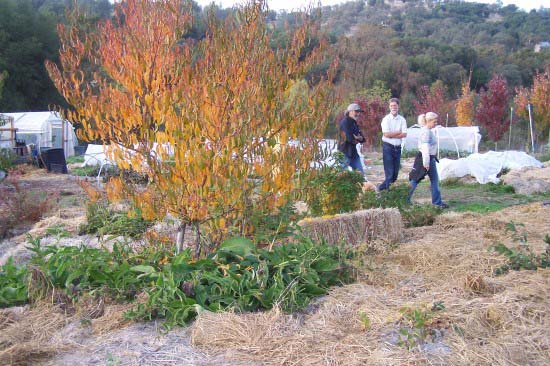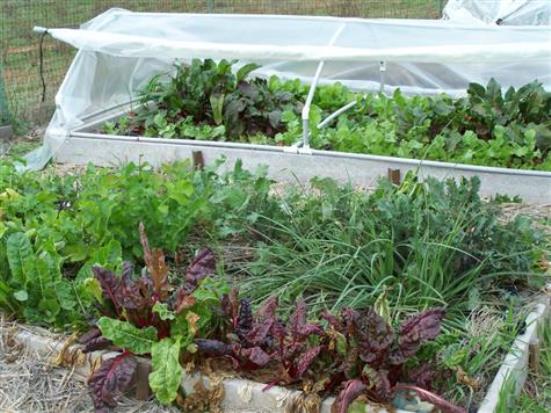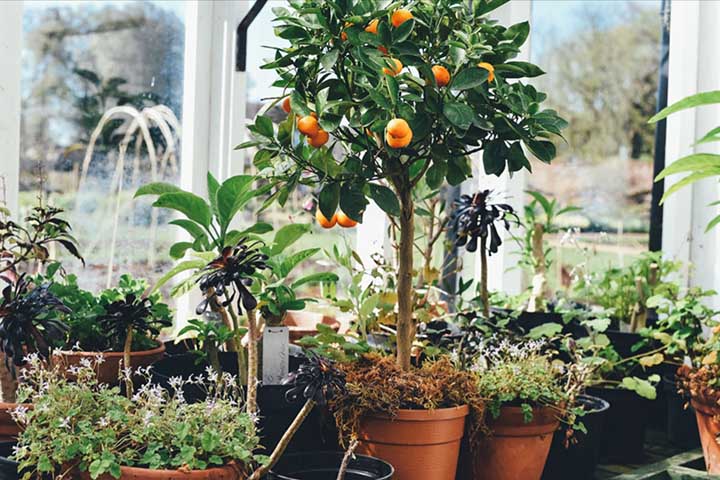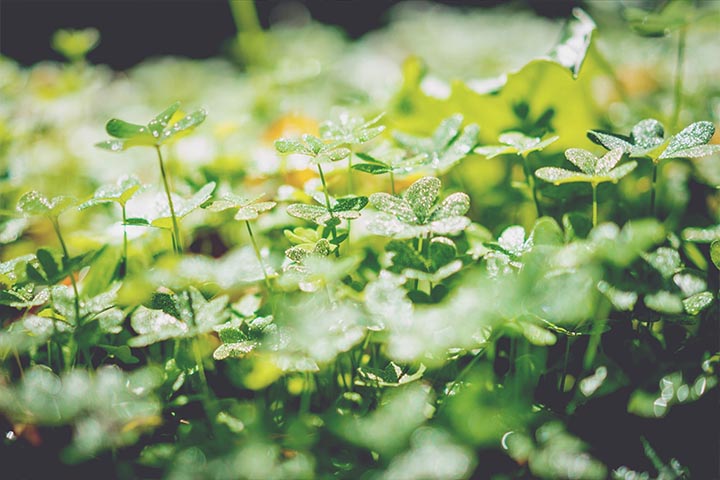There are so many benefits of gardening, such as helping combat depression and making you feel more grounded. It’s especially important in the wintertime to do activities that uplift your mind and give you prana.
When leaves fall off trees and snow falls from the sky, it doesn’t necessarily mean that the growing season is over. Here are five simple ways to continue enjoying your garden in the cold winter months, so you can stay active and connected with nature.
1. Mulch
If used properly, mulch can help to increase fertility, water retention, protect the soil from erosion, and suppress unwanted weeds. If you are going to clear a garden bed for the winter, the bare minimum you would want to do is cover the bed with mulch.
For annual vegetable beds, covering with a mixture of straw mulch and composted manure will protect the soil over winter months and break down into a nutrient rich compost for spring planting.
For perennial plants such as trees, bushes and shrubs, surrounding the base of the plant with a ring of composted woodchip, shredded leaf, or straw mulch can help protect the roots from winter freeze-thaw cycle.

Composted mulch is key, because fresh mulch will take much longer to break down and temporarily rob the soil of nutrients. If you have fresh mulch, you can make a seperate pile of mixed with manure or other nitrogen rich material such as pond algae, grass clippings, coffee grounds, or whatever else you may have available. Let the pile break down over a season and you will end up with rich composted mulch ready for use in the garden.
Keep in mind that if your winter months are cold and wet, too much mulch can be a storehouse for pathogens (i.e fungi and bacteria that harm your crops). Never pile your mulch directly on the trunks, stems or roots of plants; allow some space for the plant to breathe.
Here’s a recipe for bomb-proof sheet mulching.
2. Extend the Growing Season with a Greenhouse
You don’t have to be limited by the first frost when it comes to growing vegetables. A greenhouse can help you greatly increase your growing season and extend into it into winter months.
If you have enough land, big greenhouses or hoop houses are great for lots of production. However, you can make one even in the tiniest garden bed with a DIY cold frame.

Click here for an easy DIY raised bed hoop house using only metal brackets, PVC pipe, and greenhouse plastic.
3. Grow Hardy Vegetables
There are many plants that will continue to grow well past Autumn and into the first frost. Examples include kale, beets, broccoli, Brussels, cabbage, carrots, cauliflower, celery, leafy lettuces, mustard greens, rutabaga, spinach, chard, peas, bak choi and more.
Depending on your climate, there are perennial plants that can be harvested in late fall or early winter, such as Jerusalem Artichoke. Fall is also a great time to plant flowers that will bloom in late winter or early spring.
4. Move Indoors or to a Sunnier Spot
At the Sivananda Yoga Farm, our garden plot is great for hot summer months when the sun is high in the sky. In the winter, however, the nearby trees shade out much of the garden and make it difficult to grow large amounts of vegetables.

There is a corner of the garden, however, that gets lots of sunshine even in the winter. We sometimes consolidate pots of hardy vegetables and herbs in that sunny corner.
Since winters are a bit too cold here in Grass Valley for citrus, we move our potted lemon trees indoors during the winter. They make a beautiful addition to our dining hall, which also happens to be a sun room.
5. Cover Crop Mix
Cover crops are used to cover the soil, protecting it from erosion, increasing fertility, and keeping the soil healthy when you are not growing your main crop.
At the Yoga Farm we use a cover crop seed mix that consists of winter peas, hairy vetch, clover, raddish, winter rye and few other species. It is full of nitrogen fixers (plants that add nitrogen to the soil), organic matter accumulators, and deep roots that help break up compacted soil.
Cover crops can also be edible plants, although it is recommended to chop down the crops before they go to seed and till them back into the soil. If you practice no-till in your garden, you can plant your cover crop using “seed bombs”, or little balls of seeds, compost and clay. Before the cover crop goes to seed, you can simply “chop and drop” the plants and then sheet mulch on top of them.

There’s five simple ways to extend your growing season into the winter, or even all the way through until spring. We hope you enjoy these simple tips. Happy gardening!

Colin Eldridge (Krishna Das)
Krishna Das teaches and helps coordinate Yoga, permaculture and outdoors programs at the Sivananda Yoga Farm.




Trackbacks/Pingbacks